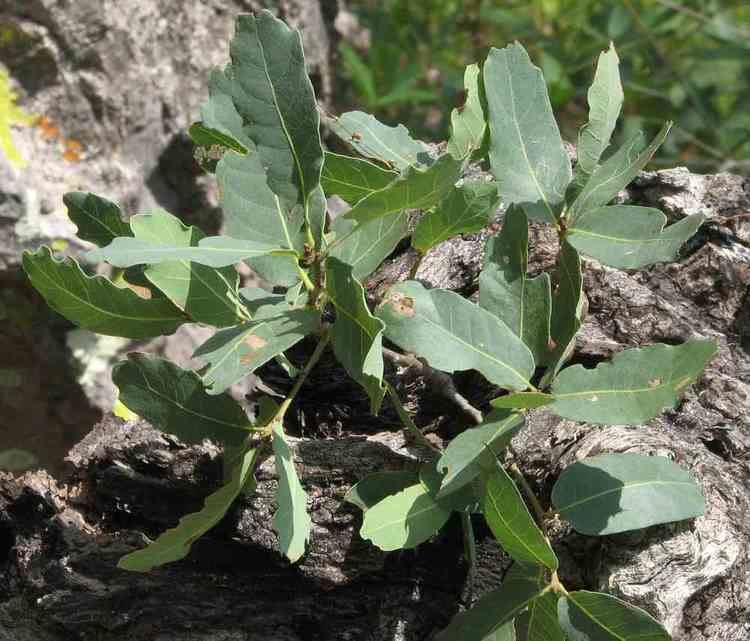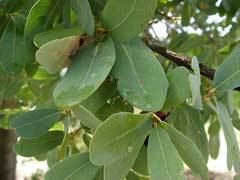Section Quercus Higher classification Oak | Genus Quercus Scientific name Quercus oblongifolia Rank Species | |
 | ||
Similar Oak, Quercus emoryi, Quercus arizonica, Quercus hypoleucoides, Quercus grisea | ||
Quercus oblongifolia, commonly known as the Mexican blue oak or Sonoran blue oak, is an evergreen small tree or large shrub in the white oak group.
Contents

Distribution

Quercus oblongifolia grows in high grasslands, canyons and mesas in Texas, Arizona and New Mexico and northwestern Mexico (Baja California Sur, Chihuahua, Coahuila, Sinaloa and Sonora in Mexico.
Description

The Mexican blue oak is a small evergreen tree growing 5-8 meters (16-27 feet) tall with a rounded crown. At higher elevations it is typically a large shrub. The trunk is up to 50 cm (20 inches) in diameter and the bark is light gray and densely furrowed. The twigs are yellowish brown and hairless with reddish brown buds. The leaves are small, alternate and oblong, with entire margins, leathery, bluish-green above and mid green below. The flowers appear in spring at the same time as the old leaves are being shed and new leaf growth starts. The male flowers form yellowish-green catkins and the female flowers are solitary or paired and grow in the leaf axils. The light brown acorns are ovoid or oblong, about 2 cm (0.8 inch) long and lodged in scaly, bowl-shaped cups about one third the length of the nut.
Habitat

This oak is common at elevations of 1200 to 1800 meters (4000-6000 feet). It is often found on thin sandy soils in semi-arid regions and is the dominant species in lower open oak woodland where it grows in association with Arizona white oak (Quercus arizonica) and Emory oak (Quercus emoryi). It is an important constituent of pinyon-juniper communities. where it grows in association with species of pine and juniper, Arizona rosewood (Vauquelinia californica), shrubby buckwheat (Eriogonum wrightii), catclaw mimosa (Mimosa aculeaticarpa), bullgrass (Muhlenbergia emersleyi), plains lovegrass (Eragrostis intermedia), fendlerbush (Fendlera rupicola) and wolftail (Lycurus phleoides).
